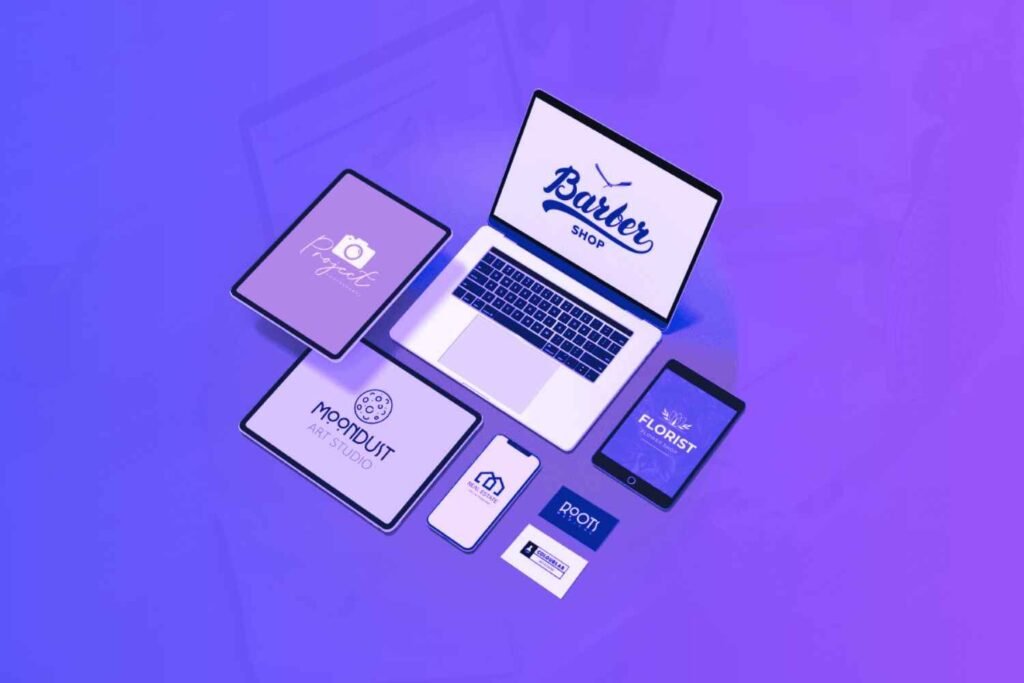Branding can feel like a whole new language, can’t it? With so many specific terms thrown around, it’s easy to get lost in the jargon. But don’t worry. I have decoded them for you. Understanding these branding terms isn’t just for marketers.
Whether you’re a small business owner, a freelancer, or just curious, knowing the lingo can really help you make informed decisions about how you present yourself or your business to the world.
So, let’s dive into the world of branding terms together and make sense of all those buzzwords and acronyms!
Disclaimer: If you buy any products through links on this site, I may earn a commission. But it doesn't make any difference to your cost, and it helps me keep this blog running. So you could always read my articles for free.
Branding terms
Below, you’ll discover essential branding terms presented in a comprehensive glossary. From logos to typography, understand key concepts to create a strong, cohesive brand identity.
Brand
A brand is the identity of a business or product, encompassing everything from its name, logo, and design to its voice, values, and customer experience. It’s how people perceive your business and what distinguishes you from competitors.
For example, think about Apple. Their brand is not just about sleek gadgets; it’s about innovation, quality, and a unique user experience. Everything from their minimalist logo to their clean store layouts and distinctive advertising reflects these values. When you think of Apple, you likely associate it with cutting-edge technology and premium quality.
Your brand should communicate your unique story and connect with your audience on an emotional level. It’s the promise you make to your customers and how you deliver on that promise consistently.
Whether you’re a small business or a large corporation, a strong brand helps build trust, loyalty, and recognition in the market.
Brand ambassador
A brand ambassador is someone who represents and promotes a company, embodying its values and mission. They help build brand awareness and trust through their genuine support and positive portrayal of the brand.
For example, when Serena Williams endorses Nike, she’s acting as a brand ambassador. Her credibility and influence in the sports world help Nike connect with a broader audience and reinforce its image of excellence and athleticism.
Brand ambassadors can be celebrities, influencers, or loyal customers who share their positive experiences and advocate for the brand in their communities.
Brand archetype(s)
Brand archetypes are universal characters or personalities that represent a brand’s identity and resonate with consumers on an emotional level. They help create a consistent and relatable brand image.
There are 12 Jungian archetypes: The Hero, The Innocent, The Everyman, The Rebel, The Explorer, The Ruler, The Creator, The Magician, The Caregiver, The Lover, The Sage, and The Jester.

Associating with an archetype helps brands form a deeper connection with their audience.
For example, Disney embodies the “Magician” archetype, focusing on creating wonder and fantasy. Harley-Davidson, on the other hand, represents the “Outlaw” archetype, appealing to those who value freedom and rebellion.
By identifying and aligning with an archetype, brands can craft more compelling and consistent stories that connect deeply with their target audience, making their messaging more effective and memorable.
Brand assets
Brand assets are the visual, auditory, and experiential elements that define your brand and make it recognizable. These include your logo, color palette, typography, tagline, and even your jingle.
For example, Coca-Cola’s red and white logo, distinctive font, and the famous “Share a Coke” tagline are all key brand assets. Nike’s “Swoosh” logo and “Just Do It” slogan are also iconic brand assets.
These elements work together to create a cohesive brand identity, ensuring consistency across all marketing materials and touchpoints. Effective brand assets help build recognition and trust with your audience.
Brand attributes
Brand attributes are the core characteristics that define your brand’s personality and promise. They shape how your audience perceives and interacts with your brand.
For example, Volvo is known for safety, reliability, and durability. These attributes influence everything from their marketing messages to the design of their cars. Similarly, Apple’s attributes include innovation, simplicity, and premium quality, reflected in their product designs and user experiences.
These attributes help differentiate your brand from competitors and build a consistent image in the minds of consumers. Identifying and emphasizing your brand’s attributes ensures that your messaging aligns with what your brand truly stands for.
Brand audit
A brand audit is a thorough examination of a brand’s current position in the market, its strengths, weaknesses, and overall effectiveness.
It involves analyzing various aspects like brand identity, customer perception, marketing strategies, and competitive landscape.
For example, a company like Starbucks might conduct a brand audit to assess its customer loyalty, the effectiveness of its marketing campaigns, and the consistency of its brand message across different locations.
By identifying areas of improvement, Starbucks can refine its strategy to better connect with customers and maintain its market position.
A brand audit helps ensure your brand remains relevant, competitive, and aligned with your business goals.
Brand awareness
Brand awareness is the extent to which consumers recognize and recall a brand. It’s about making sure your brand is known and remembered in a crowded marketplace.
For example, when you see the golden arches, you immediately think of McDonald’s, even without seeing the name. That’s high brand awareness. Similarly, hearing the phrase “Just Do It” instantly brings Nike to mind.
Building brand awareness involves consistent and strategic marketing efforts, such as advertising, social media presence, and public relations.
High brand awareness means customers are more likely to choose your brand over competitors because they are familiar with it.
Brand discovery
Brand discovery is the process of uncovering and defining the core elements of your brand. This involves identifying your brand’s mission, values, target audience, and unique selling points.
For example, when a startup like Warby Parker began its brand discovery, they identified a need for affordable, stylish eyewear and a commitment to social responsibility. This led to their mission of providing fashionable glasses at a fair price while giving back to communities.
Brand discovery sets the foundation for all branding efforts, ensuring that your brand is authentic and resonates with your audience. It’s about understanding who you are and how you can best connect with your customers.
Brand equity
Brand equity refers to the value and strength of a brand, built through consumer perception, recognition, and loyalty. It’s what makes customers choose your brand over others, even if similar products are available.
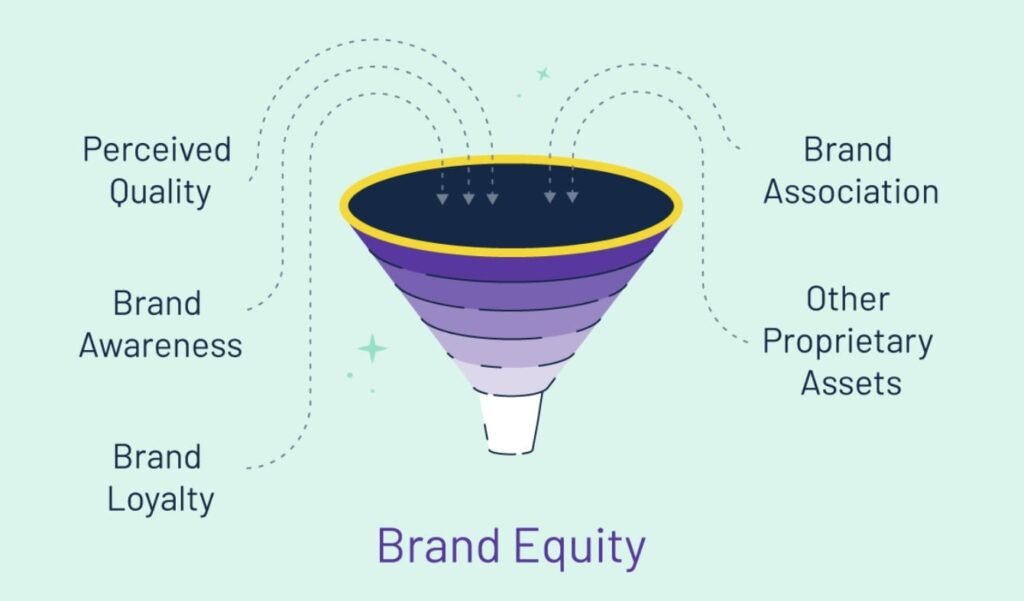
For example, Apple has high brand equity due to its strong reputation for innovation, quality, and design. People often pay a premium for Apple products because they trust and value the brand.
Positive brand equity results in higher sales, customer loyalty, and the ability to charge premium prices. It’s the intangible asset that reflects how much consumers are willing to pay for a brand name over a generic alternative.
Brand experience
Brand experience encompasses all the interactions and feelings a customer has with your brand across various touchpoints. It’s how people perceive and engage with your brand from start to finish.
For example, think about how Tesla provides a seamless brand experience. From the sleek design of their cars and the high-tech features to the efficient customer service and unique purchasing process, every aspect is crafted to reflect their innovative and premium brand values.
A strong brand experience creates positive impressions, builds loyalty, and reinforces your brand’s identity. It’s about delivering consistent, memorable interactions that align with your brand’s promise.
Brand extension
Brand extension is when a company uses its existing brand name to launch new products or services in a different category. It leverages the brand’s established reputation to enter new markets and attract customers.
For example, Dove, known for its soap and personal care products, extended its brand into skincare with a line of body washes and lotions.
Similarly, Apple extended its brand from computers to consumer electronics, like the iPhone and Apple Watch.
Brand extensions can boost credibility and sales by capitalizing on existing customer trust and brand recognition. However, it’s crucial that the new products align with the original brand’s values and quality.
Brand gap
A brand gap is the difference between how a brand is perceived by consumers and how it actually wants to be perceived. It highlights inconsistencies between your brand’s image and the reality of its products, services, or communications.
For example, if a luxury brand like Louis Vuitton is perceived as high-end but its products are found to be of lower quality, there’s a significant brand gap.
Similarly, if a tech company promotes itself as innovative but fails to deliver cutting-edge products, the gap can affect customer trust and loyalty.
Addressing the brand gap involves aligning your brand messaging with customer experiences to ensure a consistent and accurate representation.
Brand harmonization
Brand harmony is about ensuring that all elements of your brand—like your logo, messaging, colors, and customer interactions—work together cohesively. It creates a unified and consistent experience that reinforces your brand’s identity and values.
For example, Starbucks maintains brand harmony through its green logo, consistent store design, and friendly service, which all convey its commitment to a comforting and high-quality coffee experience.
Similarly, Nike’s iconic “Swoosh” logo, motivational slogan, and sleek product design all align to reinforce its brand promise of athletic excellence and empowerment.
Achieving brand harmony ensures that every touchpoint supports and strengthens your brand’s overall message, making it more recognizable and reliable to customers.
Brand identity
Brand identity is the collection of elements that represent and distinguish your brand. It includes visual aspects like your logo, color palette, and typography, as well as your brand’s voice, values, and personality.
For example, Coca-Cola’s brand identity is defined by its iconic red logo, distinctive script, and classic imagery of happiness and togetherness. Apple’s brand identity revolves around its minimalist design, sleek products, and a focus on innovation and simplicity.
These elements work together to create a consistent image and experience, making your brand instantly recognizable and helping to build a strong, memorable connection with your audience.
Brand Image
Brand image is the perception that consumers have of your brand based on their experiences, interactions, and the information they’ve received. It’s how your brand is viewed in the marketplace.
For example, BMW’s brand image is associated with luxury, performance, and precision engineering. This perception is shaped by their high-quality vehicles, sleek advertising, and premium pricing.
On the other hand, Patagonia’s brand image revolves around environmental sustainability and outdoor adventure, thanks to their eco-friendly practices and adventurous marketing campaigns.
Your brand image is built over time and can significantly influence customer loyalty and market position, so it’s crucial to manage and align it with your brand’s core values.
Brand management
Brand management is the process of developing, maintaining, and improving your brand’s image and reputation. It involves strategic planning to ensure your brand consistently delivers its promises and stands out in the market.
For example, Apple’s brand management focuses on innovation, premium quality, and a sleek design, which is reflected in its product development, marketing campaigns, and customer service.
Similarly, Nike manages its brand by emphasizing athletic performance and motivation through its advertising, endorsements, and product lines.
Effective brand management ensures that all aspects of your brand align with your core values and resonate with your target audience, helping to build strong customer loyalty and a positive market presence.
Brand personality
Brand personality refers to the human traits and characteristics attributed to a brand, which shape how it connects with its audience on an emotional level. It’s about giving your brand a distinctive voice and style that resonates with consumers.
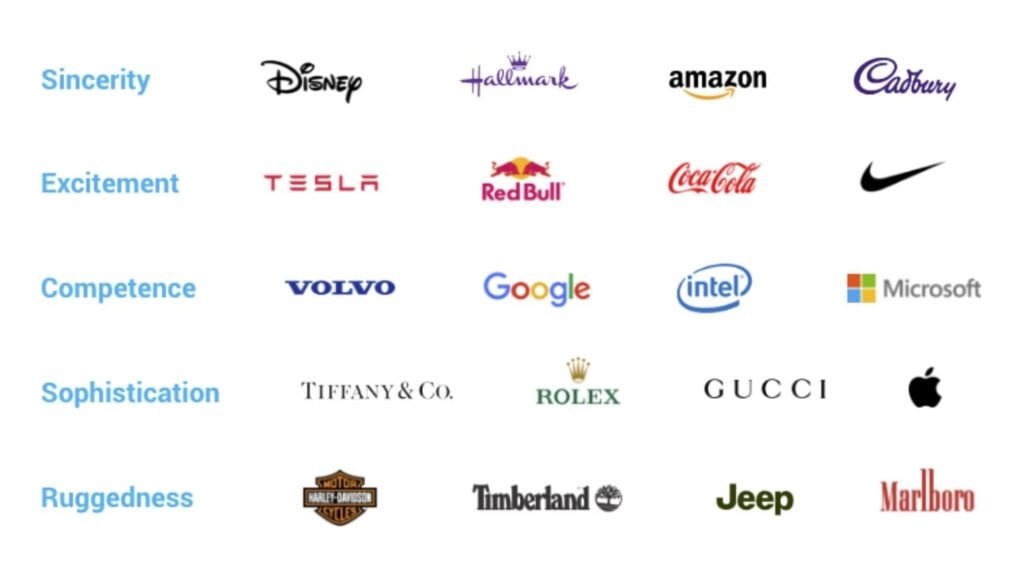
For example, Harley-Davidson embodies a rugged, rebellious personality, appealing to those who value freedom and adventure.
In contrast, Disney’s brand personality is magical, family-friendly, and whimsical, which is reflected in its storytelling and entertainment experiences.
A well-defined brand personality helps create a relatable and memorable image, fostering deeper connections with your audience and setting your brand apart from competitors.
Brand salience
Brand salience refers to how easily a brand comes to mind when a consumer is thinking about a product or service category. It’s about being top-of-mind and easily recognizable.
For example, when someone thinks of athletic shoes, Nike often comes to mind first due to its high brand salience, thanks to its prominent logo, memorable advertising, and strong market presence. Similarly, when it comes to soft drinks, Coca-Cola is highly salient, with its iconic red can and global marketing campaigns.
High brand salience helps ensure that your brand is the first choice consumers consider, making it more likely they’ll choose your products or services.
Brand valuation
Brand valuation is the process of determining the financial value of a brand. It involves assessing the brand’s worth based on various factors such as market position, revenue, customer loyalty, and brand equity.
For example, Coca-Cola’s brand valuation includes its global recognition, extensive distribution network, and strong customer loyalty, contributing significantly to its overall worth.
Similarly, Apple’s brand valuation reflects its premium pricing, innovative products, and high customer satisfaction.
Brand valuation helps companies understand their brand’s impact on financial performance and can be crucial for mergers, acquisitions, and investment decisions. It’s a measure of how much value your brand adds to your business.
Brand values
Brand values are the core principles and beliefs that guide a brand’s actions and decisions. They represent what a brand stands for and influence how it interacts with customers, employees, and the community.
For example, Patagonia’s brand values include environmental sustainability and social responsibility, which are reflected in their eco-friendly products and ethical business practices.
Similarly, Ben & Jerry’s values social justice and fair trade, evident in their activism and sourcing practices.
These values help shape a brand’s identity and connect with customers who share similar beliefs, fostering loyalty and trust. They’re the foundation of your brand’s reputation and how it’s perceived.
Branding
Branding is the process of creating and managing a brand’s identity to differentiate it from competitors and build a strong, recognizable image in the market.
It involves developing elements like a logo, color scheme, and messaging, as well as defining the brand’s values and personality.
For example, Apple’s branding includes its minimalist logo, sleek product design, and innovative technology, which together create a premium and forward-thinking image.
Similarly, Nike’s branding revolves around its iconic “Swoosh,” motivational slogans, and endorsements of athletes, which convey a message of empowerment and performance.
Effective branding helps establish a memorable identity, attract loyal customers, and drive business success.
Co-Branding
Co-branding is a marketing strategy where two or more brands collaborate to create a product or service that combines their strengths and appeals to their shared audience.
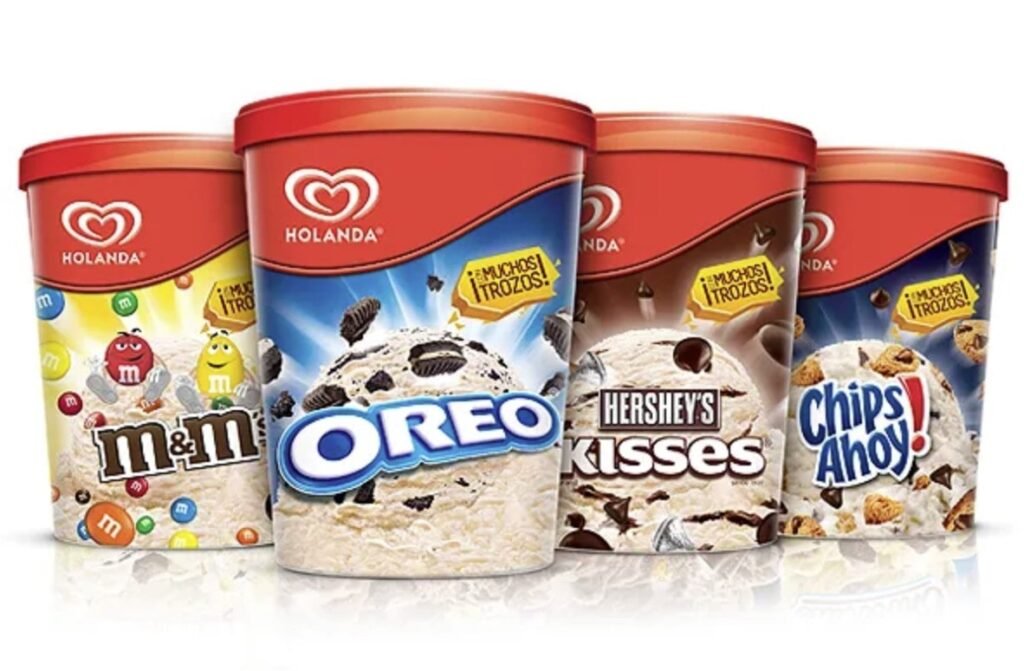
It’s a way to leverage each brand’s reputation to enhance the overall value and reach.
For example, the partnership between Nike and Apple resulted in the Nike+ line of fitness products, integrating Nike’s sports expertise with Apple’s technology.
Another example is the collaboration between Hershey and Betty Crocker, which led to co-branded baking mixes featuring Hershey’s chocolate.
Co-branding can boost visibility, attract new customers, and create unique offerings by blending complementary brand strengths.
Color system/palette
A brand color system is a set of specific colors chosen to represent a brand, creating a consistent and recognizable visual identity. These colors are used across all marketing materials, products, and communications to reinforce the brand’s image.
For example, Coca-Cola’s iconic red and white color scheme instantly evokes its brand, making it easily identifiable. Similarly, Facebook’s blue color palette is consistent across its app, website, and marketing materials, reinforcing its brand identity.
A well-defined brand color system helps ensure that all visual elements are cohesive, enhancing brand recognition and making a lasting impression on the audience.
Descriptor
A brand descriptor is a short phrase or word that clarifies a brand’s category, function, or purpose, helping consumers understand what the brand offers at a glance.
For example, in “Nike: Just Do It,” the phrase “Just Do It” acts as a slogan, but “sportswear” or “athletic apparel” could serve as a brand descriptor, clarifying Nike’s market.
Similarly, “Starbucks Coffee” uses “Coffee” as a descriptor to specify its core product offering.
Brand descriptors ensure clarity and instant recognition, making it easier for customers to understand and remember what your brand is all about.
Differentiation
Brand differentiation is the process of distinguishing your brand from competitors by highlighting unique features, benefits, or qualities. It’s what makes your brand stand out in the market.
For example, Tesla differentiates itself with its focus on cutting-edge electric vehicle technology and sustainability, setting it apart from traditional automakers. Similarly, Warby Parker differentiates by offering stylish, affordable eyewear online with a social mission of donating glasses to those in need.
Effective brand differentiation helps attract and retain customers by offering something unique and valuable, ensuring your brand is memorable and preferred over others in the market.
EPI (Ethical Positioning Index)
The Ethical Positioning Index (EPI) is a measure of how a brand’s ethical practices and values are perceived by consumers. It evaluates factors like sustainability, social responsibility, and corporate governance.
For example, Patagonia scores highly on the EPI due to its commitment to environmental sustainability, ethical labor practices, and transparency in its supply chain. Another example is The Body Shop, which emphasizes cruelty-free products and fair trade practices, enhancing its ethical positioning.
Brands with a high EPI are often preferred by consumers who value ethical considerations, helping to build trust and loyalty while differentiating the brand in a competitive market.
Freemium
Freemium is a business model that offers basic services for free while charging for advanced features, extra functionality, or premium content.

It allows users to experience the core aspects of a product without initial cost, encouraging them to upgrade later.
For example, Spotify offers free access to its music streaming service with ads and limited skips, while its premium subscription removes ads and provides offline listening.
Similarly, LinkedIn has a free version for networking and job searching, but its premium plans offer advanced job insights and messaging features.
The freemium model helps attract a large user base, with the potential to convert free users into paying customers.
Generic Brand
A generic brand is a product that lacks a widely recognized name or logo, typically offering a no-frills alternative to branded goods. These products focus on functionality and affordability rather than brand prestige.
For example, in supermarkets, you might find generic brands of cereal or paper towels, often labeled simply as “corn flakes” or “paper towels” without a specific brand name. They are usually positioned next to well-known brands like Kellogg’s or Bounty.
Generic brands are popular for budget-conscious consumers who prioritize price over brand loyalty, providing a cost-effective option while maintaining basic quality and functionality.
Icon
An icon is a visual symbol or graphic element that represents and distinguishes a brand. It’s a simplified image that conveys the brand’s essence and is easily recognizable.
For example, Apple’s bitten apple icon is instantly recognizable and symbolizes innovation and sleek design. Another example is McDonald’s golden arches, which are synonymous with fast food and global presence.
Brand icons help create a strong visual identity, making the brand easily identifiable even without text. They are often used in logos, app icons, and marketing materials to reinforce brand recognition and recall.
Initialism
Initialism in branding is the use of initials from a company’s name to create a shortened, easily recognizable brand name. It simplifies the brand’s identity and can make it more memorable.
For example, IBM stands for International Business Machines, and KFC stands for Kentucky Fried Chicken. These initials are easier to remember and quicker to say, helping the brand stand out and be more easily recalled by consumers.
Using initialism can be particularly effective for brands with long or complex names, providing a concise and catchy alternative that still maintains the original identity and recognition of the full name.
Intangibles
Intangible assets are non-physical resources that add value to a business. Unlike tangible assets like buildings or machinery, intangible assets are invisible yet crucial for a company’s success.
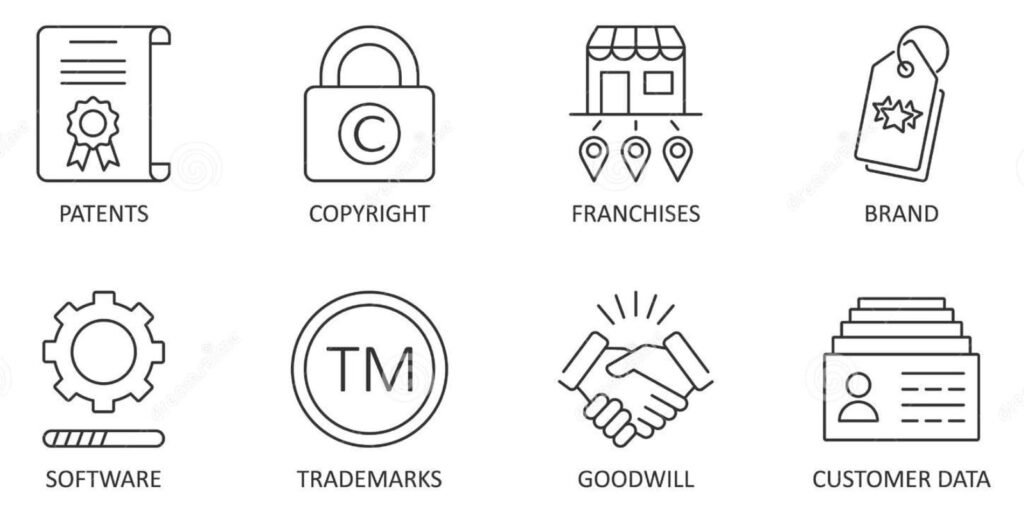
Examples include patents, which protect unique inventions; trademarks, which safeguard brand identity; and copyrights, which secure creative works. Other examples are goodwill, representing the value of a company’s reputation, and software, especially proprietary systems developed in-house.
These assets can be pivotal in differentiating a business, driving revenue, and sustaining competitive advantage. Despite their invisible nature, intangible assets often play a significant role in a company’s overall valuation and growth strategy.
Logo
A logo is a visual symbol that represents a brand’s identity and values. It’s a key element in branding because it helps customers quickly recognize and remember a company.
Think of the iconic swoosh of Nike or the golden arches of McDonald’s—these logos are instantly recognizable and convey the essence of the brands they represent. A well-designed logo can communicate the brand’s mission, quality, and personality in a simple and memorable way.
Whether it’s a stylish wordmark, a graphic icon, or a combination of both, a logo plays a crucial role in building a strong, coherent brand presence.
Mascot
A mascot is a character or symbol that embodies the spirit of a company or product, often creating a friendly and approachable image. Mascots can be animals, people, or even objects, and they help make a brand more memorable and relatable.
For example, the Geico Gecko is not just a quirky character; he personifies the insurance company’s approachable and humorous nature. Similarly, Tony the Tiger represents Kellogg’s Frosted Flakes with enthusiasm and energy.
Mascots often appear in advertisements, on packaging, and at events, helping to build emotional connections with audiences and strengthen brand recognition.
Messaging
Messaging refers to the way a company communicates its core values, promises, and identity to its audience. It’s about crafting a clear, consistent narrative that resonates with customers and distinguishes the brand from competitors.
For instance, Apple’s messaging often focuses on innovation and simplicity, highlighted in their “Think Different” campaign. Meanwhile, Coca-Cola’s messaging revolves around happiness and togetherness, evident in their “Open Happiness” slogan.
Effective messaging not only conveys what a brand stands for but also engages customers emotionally, reinforcing brand loyalty and shaping their perceptions. It’s a vital part of building a strong, recognizable brand presence.
Mission statement
A mission statement in branding is a concise declaration of a company’s core purpose and goals. It outlines what the company aims to achieve and why it exists, guiding its strategies and actions.
For example, Tesla’s mission statement is “to accelerate the world’s transition to sustainable energy,” reflecting their commitment to innovation and environmental responsibility.
Similarly, Nike’s mission is “to bring inspiration and innovation to every athlete in the world,” emphasizing their focus on empowerment and performance.
A well-crafted mission statement helps align employees and attract customers by clearly communicating the brand’s values and long-term vision.
Monogram
A monogram in branding is a design that combines two or more letters, usually the initials of a company or individual, into a single, cohesive symbol.
It’s a stylish and often elegant way to represent a brand, making it both recognizable and memorable.

For example, the monogram “LV” is synonymous with Louis Vuitton, and the intertwined “GG” is a hallmark of Gucci.
Monograms are especially effective in creating a sophisticated and timeless brand identity.
They’re commonly used in logos, product branding, and promotional materials, offering a clean and refined visual shorthand for the brand’s name.
On-Brand
“On-brand” means that something aligns well with a company’s established identity, values, and messaging. It reflects consistency and coherence with the brand’s image and voice.
For instance, if Nike releases a motivational ad featuring an inspiring athlete, it’s “on-brand” because it resonates with their focus on performance and empowerment.
Similarly, if a luxury brand like Chanel uses elegant and sophisticated design elements in its marketing, it’s staying true to its high-end, classic image.
Being “on-brand” ensures that all aspects of a company’s communications and actions reinforce their core identity, helping to build a strong, recognizable presence.
Parent Brand
A parent brand is the main or overarching brand that owns and manages one or more subsidiary brands or product lines. It represents the primary identity under which all related products or services are marketed.
For example, Procter & Gamble (P&G) is a parent brand that oversees various well-known subsidiaries like Tide, Pampers, and Gillette. Similarly, Volkswagen is a parent brand with subsidiaries like Audi and Porsche.
The parent brand provides credibility and often influences the perception of its sub-brands, helping to unify and strengthen the overall brand portfolio while allowing individual brands to cater to specific markets.
Personas
A persona is a fictional character that represents a brand’s ideal customer. It’s crafted based on market research and helps businesses understand and target their audience more effectively.
For example, if a company sells luxury skincare products, their persona might be “Sophisticated Sarah,” a high-income professional in her 30s who values premium quality and effective ingredients.
Conversely, a brand targeting eco-conscious consumers might create a persona like “Green Greg,” a young, environmentally aware individual who prioritizes sustainability.
By defining these personas, brands can tailor their messaging, product offerings, and marketing strategies to better resonate with their target audience.
Positioning
Brand positioning is the strategy of defining how your brand is perceived in the minds of consumers relative to competitors. It involves identifying a unique space in the market that highlights your brand’s strengths and differentiates it from others.
For example, Volvo positions itself as the leader in safety, emphasizing features like advanced driver assistance systems and crash protection.
In contrast, Tesla positions itself as an innovator in electric vehicles, focusing on cutting-edge technology and sustainability.
Effective brand positioning helps your brand stand out, attract the right audience, and communicate its unique value proposition clearly and compellingly.
Private Label
A private label refers to products that are manufactured by one company but sold under another company’s brand name. Essentially, it’s a way for retailers to offer exclusive products without creating them from scratch.
For instance, many grocery stores have their own private-label brands, like Costco’s Kirkland Signature or Walmart’s Great Value. These products are often made by third-party manufacturers but carry the store’s branding.
Private labels can provide higher profit margins for retailers and allow them to offer unique products that cater specifically to their customer base. It’s a strategic way to enhance brand loyalty and differentiate from competitors.
Rebranding
Rebranding involves changing a company’s image, name, logo, or other elements to better align with its current goals or market position. It’s often done to refresh a brand’s identity, attract a new audience, or shed a negative image.
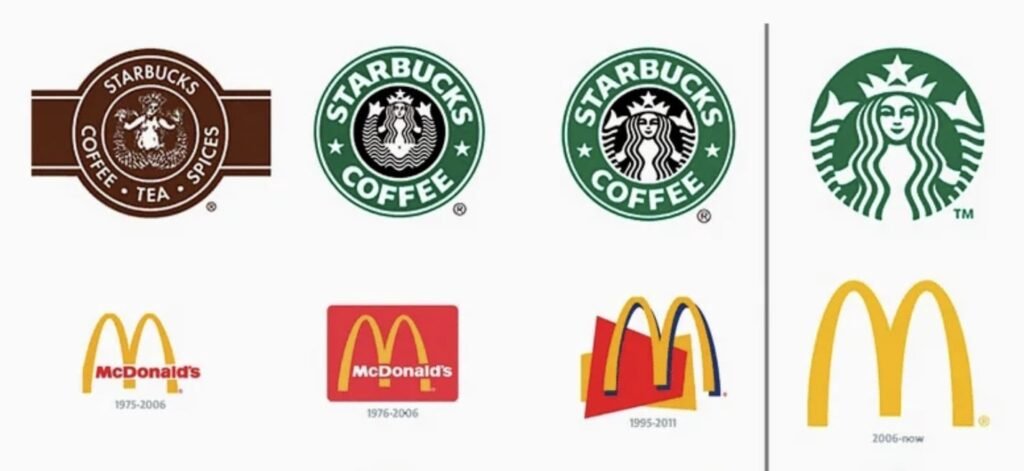
For example, when Dunkin’ Donuts rebranded to simply “Dunkin’,” it emphasized its broader menu beyond just donuts, reflecting its evolution into a coffee and beverage chain.
Another example is Airbnb’s shift from “AirBed & Breakfast” to its current name, signaling a broader scope of accommodation options and a more global presence.
Rebranding can rejuvenate a brand’s appeal and better meet changing customer expectations.
Style Guide
A style guide in branding is a comprehensive document that outlines how a brand’s visual and verbal elements should be used. It ensures consistency across all marketing materials and communications.

The guide typically includes rules for logo usage, color palettes, typography, and imagery, as well as tone of voice and messaging guidelines.
For example, Apple’s style guide specifies the precise use of their logo, fonts like Helvetica Neue, and a minimalist design approach, all reflecting their sleek, modern brand identity.
Similarly, Coca-Cola’s style guide dictates how their red color and classic script logo should be used to maintain a consistent, recognizable image.
Synonyms: Brand Standards, Brand Guidelines
Sub-brand
A subbrand is a secondary brand that exists under the umbrella of a parent brand, each with its own distinct identity while still being associated with the main brand.
Subbrands allow a company to target different market segments or offer varied products without diluting the parent brand’s core image.
For instance, Toyota has the subbrand Lexus, which focuses on luxury vehicles while maintaining Toyota’s reputation for reliability.
Another example is Nestlé, which owns subbrands like KitKat and Nespresso, each catering to specific tastes and needs. Subbrands can leverage the parent brand’s reputation while carving out their own unique market position.
SWOT
SWOT analysis is a strategic tool used to assess a brand’s Strengths, Weaknesses, Opportunities, and Threats. It helps businesses understand their position in the market and plan accordingly.
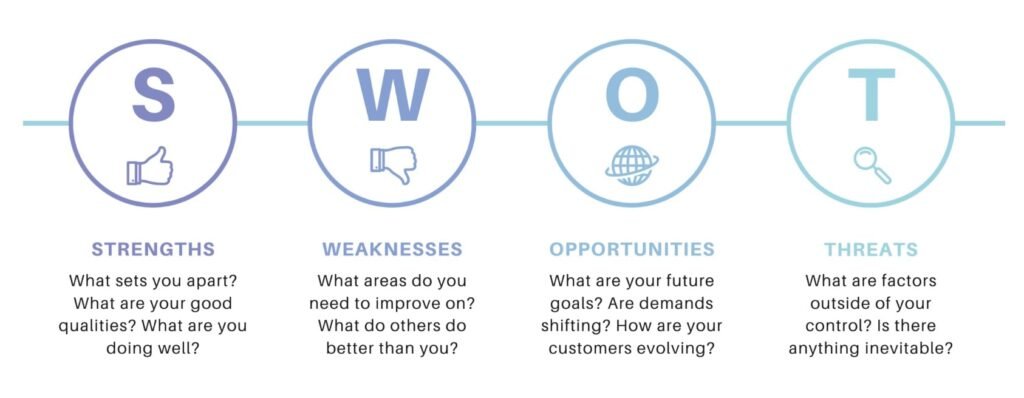
Strengths might include strong brand recognition or loyal customers, while weaknesses could be limited product variety or a poor online presence.
Opportunities might involve emerging markets or new trends, while threats could be intense competition or economic downturns.
For example, Nike’s SWOT analysis might highlight its strong brand and innovation as strengths, while noting potential threats from new competitors.
Conducting a SWOT analysis helps brands make informed decisions and improve their market strategy.
Symbol
A symbol is a visual element that represents a brand’s identity and values, often simplifying complex concepts into a memorable image. Symbols are designed to be instantly recognizable and convey the essence of a brand.
For instance, the Apple logo, an apple with a bite taken out, symbolizes innovation and simplicity. Similarly, the swoosh of Nike represents movement and athleticism.
Symbols help create a strong visual association with the brand, making it easier for customers to remember and connect with the brand’s message and values.
They play a crucial role in building brand recognition and establishing a lasting impression.
Tagline
A tagline in branding is a short, catchy phrase that encapsulates a brand’s essence or promise. It’s designed to be memorable and convey a key message about the brand in just a few words.
For example, Nike’s “Just Do It” motivates and inspires action, reflecting their focus on athletic performance. Similarly, McDonald’s “I’m Lovin’ It” emphasizes enjoyment and satisfaction, aligning with their friendly, approachable image.
A well-crafted tagline reinforces the brand’s identity and helps customers quickly grasp what the brand stands for, making it a powerful tool for creating a lasting impression and differentiating from competitors.
Tangibles
Tangibles in branding refer to the physical elements that a brand uses to create a sensory experience for its customers. These are the concrete aspects of a brand that people can see, touch, or interact with.
Examples include product packaging, store design, and promotional materials. For instance, the sleek design of Apple’s product packaging or the distinct red and white color scheme of Coca-Cola cans are tangible elements that contribute to brand recognition and perception.
These tangible aspects help reinforce the brand’s identity, quality, and overall image, making them crucial in shaping customer experiences and building brand loyalty.
Touchpoint
A touchpoint in branding is any moment when a customer interacts with a brand, whether directly or indirectly. These interactions help shape the customer’s perception and experience of the brand.
Touchpoints can include anything from visiting a company’s website and seeing advertisements to experiencing customer service or using the product itself. For example, a touchpoint for Starbucks might be the in-store experience, including the barista’s service and the ambiance of the café.
Similarly, an online touchpoint could be interacting with the brand’s social media posts or receiving a promotional email. Managing each touchpoint effectively ensures a consistent and positive brand experience.
Trademark
A trademark in branding is a legal protection for a brand’s unique symbols, names, logos, or other identifiers that distinguish its products or services from others.
It helps prevent competitors from using similar marks that could confuse customers. For example, the swoosh logo of Nike and the golden arches of McDonald’s are both registered trademarks, ensuring that no other company can use these symbols without permission.
Trademarks are crucial for maintaining a brand’s identity and reputation, as they safeguard the elements that customers recognize and associate with the brand.
Registering a trademark provides legal recourse if someone infringes on these protected elements.
Typographic System
A typographic system refers to the set of guidelines and standards for using typefaces, fonts, and text styles to create a cohesive visual identity. It includes choices about font families, sizes, weights, and spacing, ensuring consistency across all brand materials.
For example, the typographic system for Google uses the sans-serif font Roboto, which is clean and modern, reflecting the brand’s approachable and innovative nature.
Similarly, IBM’s typographic system uses the IBM Plex typeface to convey a sense of professionalism and tech-forward thinking. A well-defined typographic system helps maintain a unified brand appearance and enhances overall readability and recognition.
Verbal Identity
Verbal identity in branding encompasses the tone, language, and style a brand uses in its communication. It’s about how a brand speaks to its audience through messaging, ensuring consistency and alignment with its overall image.
For example, Apple’s verbal identity is sleek and innovative, reflected in their minimalist and straightforward language in product descriptions and marketing.
On the other hand, Taco Bell’s verbal identity is fun and playful, evident in their lively and casual tone used in social media and advertising.
Crafting a strong verbal identity helps a brand connect with its audience, reinforce its personality, and build a memorable presence.
Vision Statement
A vision statement in branding outlines a brand’s long-term goals and aspirations, describing what it aims to achieve in the future. It’s a forward-looking declaration that guides strategic decisions and inspires both employees and customers.
For instance, Tesla’s vision statement is “to create the most compelling car company of the 21st century by driving the world’s transition to electric vehicles,” highlighting their commitment to innovation and sustainability.
Similarly, Microsoft’s vision is “to help people and businesses throughout the world realize their full potential,” emphasizing their focus on empowering users through technology. A well-crafted vision statement helps align efforts and energize stakeholders towards a common goal.
Visual Identity
Visual identity in branding refers to the visual elements that represent a brand and help it stand out. This includes the logo, color palette, typography, imagery, and overall design style.
These components work together to create a cohesive and recognizable look. For example, the iconic red and white color scheme of Coca-Cola and its distinct script logo are key elements of its visual identity.
Similarly, the minimalist design and use of clean lines in Apple’s branding reinforce its modern and sophisticated image. A strong visual identity ensures consistency across all touchpoints, making the brand easily identifiable and memorable to customers.
Wordmark
A wordmark in branding is a type of logo that focuses on the brand’s name, using distinctive typography to create a unique visual identity. It’s all about stylizing the text in a way that makes the brand easily recognizable.
For example, Google’s wordmark features its name in a playful, colorful font, which reflects its innovative and friendly nature. Similarly, Coca-Cola’s wordmark uses a classic script to convey tradition and nostalgia.
A well-designed wordmark not only enhances brand recognition but also communicates the brand’s personality and values through its choice of font, color, and styling.
Summing up: branding terms
Now that we’ve navigated through the essential branding terms, you should feel more confident in understanding and using this vocabulary in your own branding efforts.
Remember, these terms are tools to help you build and communicate your brand effectively. Whether you’re developing a brand strategy, designing a logo, or crafting a marketing message, having a solid grasp of these concepts can make a big difference.
Keep this guide handy as you continue to build and refine your brand, and you’ll be well on your way to creating a strong, memorable presence in the market.
Did I miss anything? Do you have any questions or comments? Share your thoughts below in the comments section.

